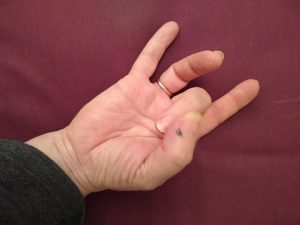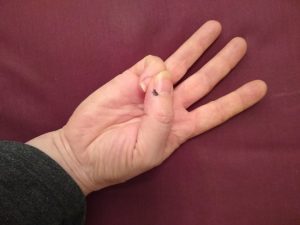Three Simple Ways to Boost Your Resilience
 When it comes to wellbeing, resilience is one of this year’s biggest buzz words. From politicians to parents, school kids to captains of industry, everyone needs a healthy dose of resilience.
When it comes to wellbeing, resilience is one of this year’s biggest buzz words. From politicians to parents, school kids to captains of industry, everyone needs a healthy dose of resilience.
What is resilience; what does it do for us, and, most importantly, how can we increase the amount we have?
Google defines resilience as:
- The capacity to recover quickly from difficulties; toughness
- The ability of a substance or object to spring back into shape; elasticity
The truth is that, even when you’re happy, healthy and living your best life, there’s always the chance that fate will throw a spanner in the works. Losing your job or not getting the promotion you were expecting; a relationship break-up; a phone call from your doctor to say something is not quite right; the loss of a loved one — there are countless ways that life can knock us for six. While the big shocks, the ones that really matter, will always be hard to overcome, the more resilient you are, the more likely it is that you’ll bounce back quicker and stronger.
Nurture or nature
Psychological studies have shown that being resilient — there’s such a thing as the Connor-Davidson Resilience Scale that measures resilience — may protect against developing post-traumatic stress disorder (PTSD) , after experiencing traumatic events. Plus, if you have a good stockpile of resilience, you’re less likely to get thrown off track by problems that simply aren’t worth it in the grand scheme of things.
While everybody is born with a certain amount of resilience (research suggests that genetic factors influence our level of resilience ), it’s environmental factors and life experiences that ultimately determine how resilient we really are. And the good news is that, just like flabby muscles, resilience can be exercised, honed and built up. Psychology websites advise that, in order to be more resilient, we need to embrace change; have strong support networks; be optimistic, and nurture and know ourselves. That’s all well and good but in times of crisis that’s easier said than done.
Worry doesn’t equal preparation
I grew up with a mother who used to imagine fatal car crashes each time my dad or I came home late. My mum never understood that her worrying didn’t protect against bad stuff happening. It only led to her being constantly tense, stressed, fearful, and often not much fun to be around. Pessimist was my mum’s middle name, and a lot of that rubbed off on me. No surprise then that I was a ‘glass half empty’ girl for a long time.
So, what changed? Well, the three simple practices below have made a massive difference to the way I see the world and react to setbacks and challenges. They are easy to integrate into your day, take no or little time and don’t require you to set aside space for them in your already busy diary.
1. Practising Gratitude
Time needed: 5 minutes
When: before going to sleep
 You may have heard that ‘woke’ people practise gratitude. Perhaps you’ve even embraced it yourself? If, however, you take the view of a grumpy five-year-old at the dinner table who stubbornly pouts, “The starving children can have my broccoli”, I suggest you reconsider.
You may have heard that ‘woke’ people practise gratitude. Perhaps you’ve even embraced it yourself? If, however, you take the view of a grumpy five-year-old at the dinner table who stubbornly pouts, “The starving children can have my broccoli”, I suggest you reconsider.
Looking for three things you are grateful for at the end of each day will help you to change your perception of life. Even if your day has been truly awful, you’re still lying in a warm bed with a roof over your head — so that’s two things to be grateful for, for starters!
Keep a gratitude diary
A good way of plotting your positivity is to keep a gratitude diary. Each day write down three things that you are grateful for. The act of writing your thoughts down is important. You have to think a bit harder about what to write and which words you’ll use. More potent than just letting thoughts pass fleetingly through your mind; the act of writing engages a different part of the brain, so more of your brain is involved in the act of being grateful. Basically, you’re taking it up to the next level!
Share your joyful moments around the dinner table
It’s even better to talk out loud; perhaps record your words of gratitude on your phone or exchange them with your partner before going to sleep. Tell them what you’re grateful for and have them say it back to you. Brene Brown, of TED Talk fame, practices gratitude at the dinner table. Everybody at the table shares what they appreciated today or what brought them joy.
Once you practice gratitude actively, you’ll begin to look out for joyful moments during your day. You’ll notice things you may have overlooked or taken for granted before: the song of a bird, a late rose, the smile of a stranger, a surprise seat on the commuter train. Being mindful of such moments will make them more prominent in your perception, and they’ll take up more space in your day-to-day experience. Practising gratitude will change your reality to a more joyful one, leaving you more likely to conclude at the end of the day, “You know, that really wasn’t so bad”.
2. Mirror work
Time needed: 10 seconds
When: every time you’re in the bathroom
Since Louise Hay first published her book ‘Mirror Work – 21 Days to Heal Your Life’ in 1984, the bathroom mirror has become a staple tool for personal transformation. I often give mirror work as homework for my clients, but I’ve found that the way Hay prescribes it is too intense for most people, so they quickly abandon the exercises. Unlike Hay’s, my way of doing it doesn’t take time; you won’t need to find a 30-minute slot in your day to do it in.
Here’s looking at you, kid
Whenever you find yourself in front of a bathroom mirror, take a moment to look into your eyes. Not at your hair or make-up, just into your eyes. Look into them as if you were reassuring your best friend, sister or child. Suddenly, it doesn’t matter whether your hair is perfect or whether you look tired or stressed. Just lock eyes with the person staring back at you, and send yourself the message, “I am here, I see you, I won’t go anywhere”. You don’t need to speak out loud; the intention is in your eyes. It doesn’t take more than a few seconds.
Mending a broken heart
I started doing this when I had a broken heart. Finding myself fighting back the tears at work, at points throughout the day, I’d flee to the bathroom and share these moments of kindness and compassion with myself. It didn’t take long before I found myself winking at the girl in the mirror; “We’re alright, you go, babes”.
Eye gazing is a classic exercise for creating intimacy and connection between participants at personal development workshops; in the mirror, you instead create a loving connection with yourself. Sod the little monkey on your shoulder that wants to keep counting crows’ feet!
 3. Finger tapping
3. Finger tapping
Time needed: none
When: whenever your hands are free
I am a tapper, so tapping had to feature on this list, especially as it’s the easiest of my recommendations! A few years ago, Steve Wells from EFT Downunder introduced me to Continuous Finger Tapping. Steve had developed the habit of tapping his thumb on the sides of his other fingers while walking the dog. Steve swore by it, so I thought I’d give I go. I began tapping on my fingers while watching telly; I didn’t need to pay attention to it, and now I do it on autopilot whenever my hands are free.

Losing lifelong nervous “tics”
I used to have the rather irritating habit of kneading my right ear in a way that left it red, inflamed and painful. A nervous tic that I’d carried with me from childhood, I mainly did it when I was anxious, tense or bored. You can imagine how gobsmacked I was when, a few weeks after starting finger tapping, I realised I didn’t torture my poor ear anymore. After all those years, the urge had disappeared, and I’ve never done it since. Importantly, nor have I exchanged one addiction with another, less painful one. I don’t have any urge to tap my fingers; I just do it when my hands are not busy.
Increasing the “chill factor”
I was even more astounded when, a few weeks later, my flight for a weekend away got cancelled, after I had been waiting for several hours to board it. Instead of losing my temper, I shrugged my shoulders, hopped on the train home from the airport and made plans for my now free weekend. The fury and foul mood that I would have experienced in the past didn’t surface. My ‘chill factor’ — in other words, my resilience — had increased. Rather than wasting my time and energy on getting angry about something that I couldn’t change, I automatically turned to making plans for my surprisingly freed up weekend.




Calming the Autonomic Nervous System
How had this happened? Well, when we tap, the Autonomic Nervous System gets the message to calm down and relax. Tapping continuously has since led to me being generally calmer in so many ways. It was my son who first noticed it; he didn’t quite recognise his newly-chilled mother!
Stop should-ing yourself
Many other practices can support your emotional balance and help you face what life throws at you in a more relaxed and positive way. I’ve chosen these three because they’ve all have had a lasting and profound impact on my life and none of them eats up time or becomes a “chore”. Nobody likes chores. I often hear people say with a sigh, “I’m not doing my daily meditation anymore, I should start it again”, or “I really should take up Yoga”. Really, the only thing they should do is stop “should-ing” themselves. But that’s another blog.
